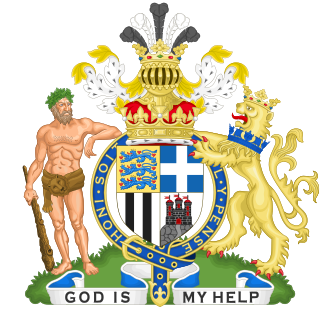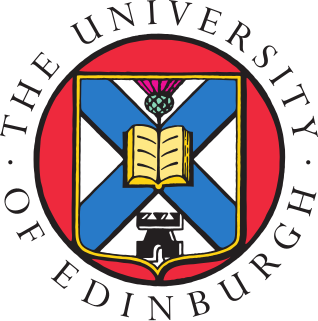
Edinburgh is the capital city of Scotland and one of its 32 council areas. Historically part of the county of Midlothian, it is located in Lothian on the Firth of Forth's southern shore. Edinburgh is Scotland's second-most populous city and the seventh-most populous city in the United Kingdom.
February 25 is the 56th day of the year in the Gregorian calendar; 309 days remain until the end of the year.

The Picts were a group of Celtic-speaking peoples who lived in what is now northern and eastern Scotland during Late Antiquity and the Early Middle Ages. Where they lived and what their culture was like can be inferred from early medieval texts and Pictish stones. Their Latin name, Picti, appears in written records from the 3rd to the 10th century. Early medieval sources report the existence of a distinct Pictish language, which today is believed to have been an Insular Celtic language, closely related to the Brittonic spoken by the Britons who lived to the south.

Scotland is a country that is part of the United Kingdom. Covering the northern third of the island of Great Britain, mainland Scotland has a 96-mile (154 km) border with England to the southeast and is otherwise surrounded by the Atlantic Ocean to the north and west, the North Sea to the northeast and the Irish Sea to the south. The country also contains more than 790 islands, principally in the archipelagos of the Hebrides and the Northern Isles. Most of the population, including the capital Edinburgh, is concentrated in the Central Belt – the plain between the Scottish Highlands and the Southern Uplands – in the Scottish Lowlands.

Sir William Wallace was a Scottish knight who became one of the main leaders during the First War of Scottish Independence.

James V was King of Scotland from 9 September 1513 until his death in 1542, which followed the Scottish defeat at the Battle of Solway Moss. His only surviving legitimate child, Mary, Queen of Scots, succeeded him when she was just six days old.

Prince Philip, Duke of Edinburgh was a member of the British royal family as the husband of Queen Elizabeth II.

Edinburgh Castle is a historic fortress which dominates the skyline of Edinburgh, the capital city of Scotland, from its position on the Castle Rock. Archaeologists have established human occupation of the rock since at least the Iron Age, although the nature of the early settlement is unclear. There has been a royal castle on the rock since at least the reign of David I in the 12th century, and the site continued at times to be a royal residence until 1633. From the 15th century, the castle's residential role declined, and by the 17th century it was principally used as military barracks with a large garrison. Its importance as a part of Scotland's national heritage was recognised increasingly from the early 19th century onwards, and various restoration programmes have been carried out over the past century and a half.

Prince Edward, Earl of Wessex is the youngest child of Queen Elizabeth II and Prince Philip, Duke of Edinburgh. At birth, he was third in line of succession to the British throne; he is currently 12th in line.

Leith is a port area in the north of the city of Edinburgh, Scotland, at the mouth of the Water of Leith.

Duke of Edinburgh, named after the city of Edinburgh, Scotland, is a substantive title that has been created three times for members of the British royal family since 1726. The current holder is Prince Philip, husband of Queen Elizabeth II.

Edinburgh Airport is an airport located in the Ingliston area of Edinburgh, Scotland. It was the busiest airport in Scotland in 2019, handling over 14.7 million passengers. It was also the sixth-busiest airport in the United Kingdom by total passengers in 2019. It is located 5 NM west of the city centre, just off the M8 and M9 motorways. It is owned and operated by Global Infrastructure Partners, who are also a minority shareholder of Gatwick Airport. The airport has one runway and one passenger terminal, and employs about 2,500 people.

The Edinburgh Festival Fringe is the world's largest arts festival, which in 2018 spanned 25 days and featured more than 55,000 performances of 3,548 different shows in 317 venues. Established in 1947 as an alternative to the Edinburgh International Festival, it takes place annually in Edinburgh, Scotland, in the month of August. The Edinburgh Festival Fringe has become a world-leading celebration of arts and culture, surpassed only by the Olympics and the FIFA World Cup in terms of global ticketed events. As an event it "has done more to place Edinburgh in the forefront of world cities than anything else".

Edinburgh Rugby is one of the two professional rugby union teams from Scotland. The club competes in the Pro14, along with Glasgow Warriors, its oldest rival. Edinburgh plays most of its home games at Edinburgh Rugby Stadium.

Fellowship of the Royal Society of Edinburgh (FRSE) is an award granted to individuals that the Royal Society of Edinburgh, Scotland's national academy of science and letters, judged to be "eminently distinguished in their subject". This society had received a royal charter in 1783, allowing for its expansion.

Edinburgh University Press is a scholarly publisher of academic books and journals, based in Edinburgh, Scotland.

The Kingdom of Scotland was a sovereign state in northwest Europe traditionally said to have been founded in 843. Its territories expanded and shrank, but it came to occupy the northern third of the island of Great Britain, sharing a land border to the south with the Kingdom of England. It suffered many invasions by the English, but under Robert the Bruce it fought a successful War of Independence and remained an independent state throughout the late Middle Ages. Following the annexation of the Northern Isles from the Kingdom of Norway in 1472 and the final capture of the Royal Burgh of Berwick by the Kingdom of England in 1482, the territory of the Kingdom of Scotland corresponded to that of modern-day Scotland, bounded by the North Sea to the east, the Atlantic Ocean to the north and west, and the North Channel and Irish Sea to the southwest. In 1603, James VI of Scotland became King of England, joining Scotland with England in a personal union. In 1707, the two kingdoms were united to form the Kingdom of Great Britain under the terms of the Acts of Union.

The University of Edinburgh, founded in 1582, is the sixth oldest university in the United Kingdom and English-speaking world and one of Scotland's ancient universities. The university has five main campuses in the city of Edinburgh, which include many buildings of historical and architectural significance such as those in Old Town. The university played an important role in Edinburgh becoming a chief intellectual centre during the Scottish Enlightenment, contributing to the city being nicknamed the "Athens of the North".



















